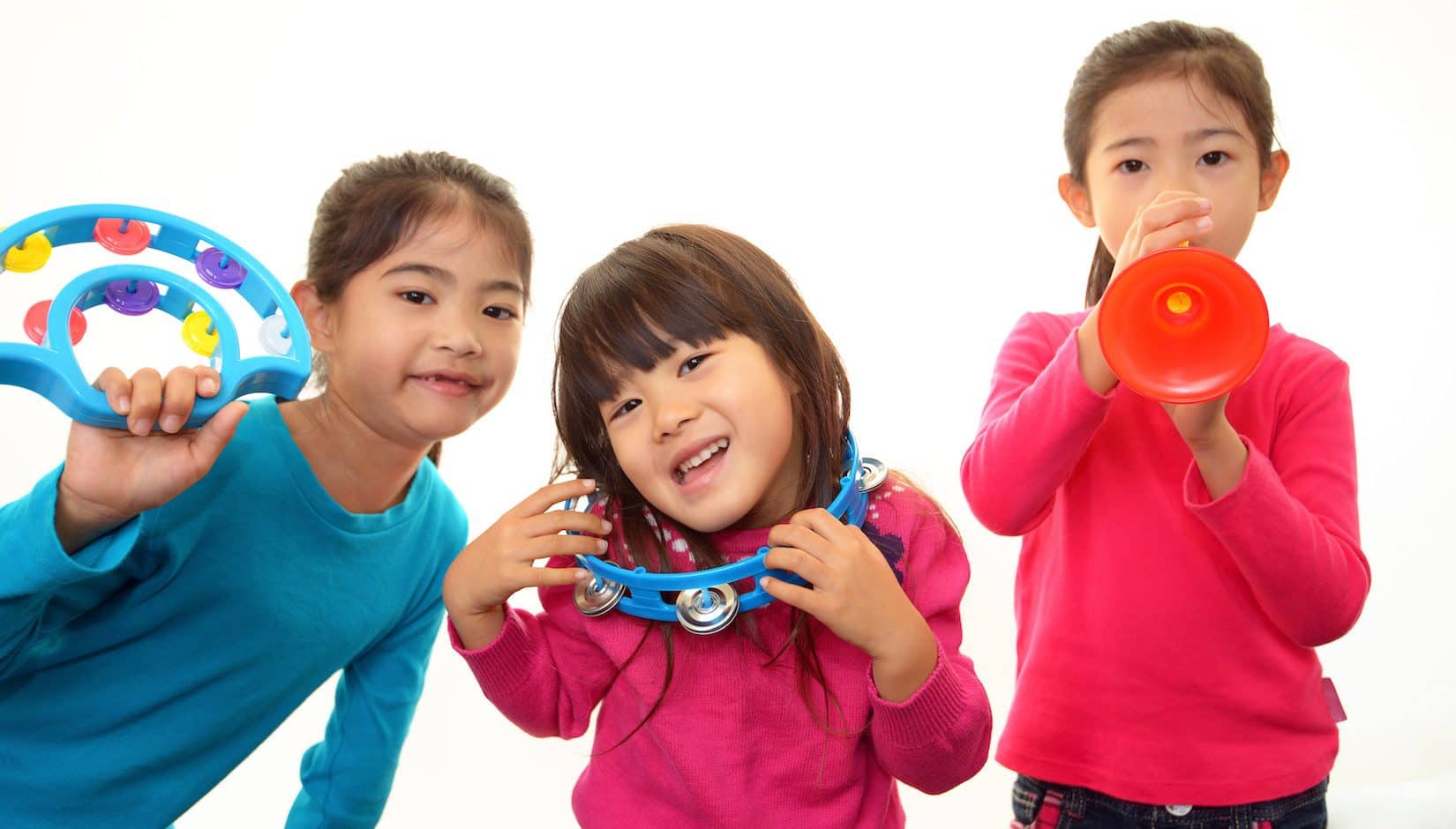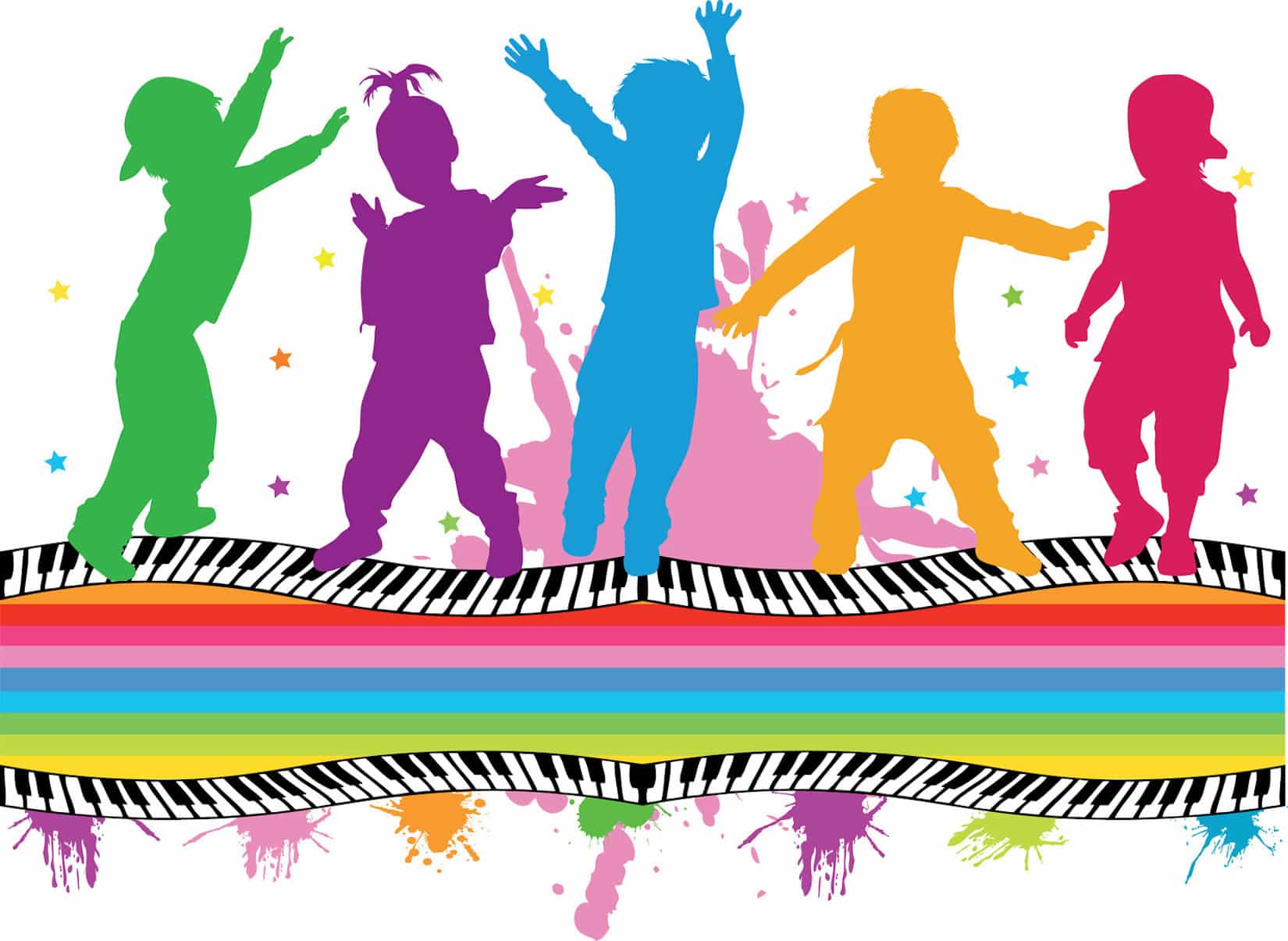Music In Early Childhood (MEC)
This full-year program runs from September to April and offers a specific curriculum for each year of age. Our proven methods of age-appropriate learning provide a strong foundation for early childhood music development and nurture a life-long love of music. The materials and methods of these classes are based upon principles of Zoltan Kodály, Carl Orff and the Solfège System, which develop the child’s own instrument, body and voice before formal instrumental instruction begins.
- Children are encouraged to actively discover concepts such as musical comparatives (loud/quiet, fast/slow, etc.), rhythm, beat and melodic contour through a variety of songs, games and movement.
- Repertoire and activities support musical literacy goals and success is measured through vocal skills development.
- Progress is showcased throughout the year in small group performances and at our annual concert
- Children age 3 attend (with parent) once a week. Parents are “weaned” out of the class in January.
- Children age 4, 5, and 6 attend once a week without parents
The following is a description of what your child will learn from year to year in our program:
Three year-olds (MEC 3)
For the first half of the year, you will accompany your three year old to help him or her feel at ease until ready to become more independent.
Three year-olds have their own special way of learning songs. They listen, absorb, and through repetition, rhythm and rhyme, learn to anticipate what’s coming next. If at the beginning your child doesn’t seem to participate, he or she is still absorbing and learning. When ready, your child will join in.
In classes, three year-olds:
- become increasingly aware of differences between their speaking and singing voices
- learn to control pitch and volume
- learn to feel the difference between the heart beat and how words are phrased in a song
- explore language and vocabulary
- learn to pitch match and echo clap
- begin to understand concepts around opposites
- learn foundations of musical language (i.e. high/low, largo/presto)
- experiment with simple percussion instruments and begin to make their own instrument choices
- learn many songs and rhymes
Four year-olds (MEC 4)
Four year-olds tend to anxiously want to be part of the group. They enjoy participating and are more aware of how songs are organized and often make up their own. We encourage this. It conveys their individuality as they express thoughts and feelings about the world around them.
In classes, four year-olds:
- prepare concepts for future identification of musical terms, symbols and reading
- learn to focus their listening
- begin to concentrate on rhythm and simple patterns
- begin to learn about the 5 line staff and how simple melodies, rhythms and notes look on the staff
- sing game songs and experience fun activities that encourage active participation and beautiful singing
Five year-olds (MEC 5)
Five year-olds are eager to learn and take an active part in the process. They like to be considered individually yet continue to enjoy their group activities. Five year olds enjoy solving puzzles and problems, and sharing results. Game songs that incorporate both individual and group participation are a favorite in this class.
In classes, five year-olds learn:
- expanding on melodic patterns
- expanding on known intervals and rhythmic patterns from song material
- combining noteheads (melody) and stems (rhythm) to read and write music
- organizing notation in measures to create time signatures and introduce conducting patterns
- pitch matching exercises, inner hearing exercises and lots of singing; they hear what they see and sing what they hear
Six year-olds (MEC 6)
Six year old classes reinforce and consolidate the previous repertoire and concepts. The focus is on expanding their knowledge base as they learn new material. It is a year of “putting it all together”.
In classes, six year-olds learn:
- review of the pentatonic scale (Do-Re-Mi-So-La-Do)
- introduction of the diatonic scale (Do-re-Mi-Fa-So-La-Ti-Do)
- “la” centred and “do” centred songs (minor and major)
- focus on absolute note names (i.e. ABCDEFG) and rhythmic terms (i.e. quarter, eighth notes, etc.)
- exposure to canons and rounds
- simple and compound meters: new rhythms and patterns are introduced
- continued playing and learning of instruments (rhythm and Orff instruments)
- reading full songs on a staff (notation, clefs, barlines, etc.)
To learn more about the principles of Zoltan Kodály, Carl Orff and the Solfège System, please see the PDF “Methods and Terms used in our Programs” in the Resources section of our website.

